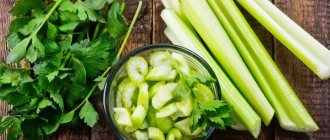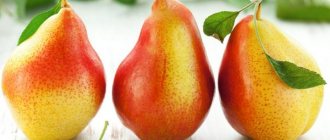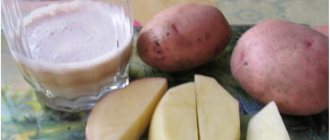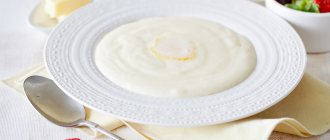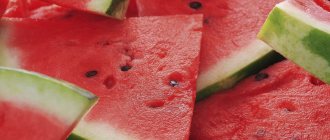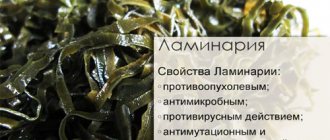Back to list Previous article Next article
20.07.2018
Tags:
pregnancy, lactation, benefits, halva
Halva in its ideal form is an exquisite oriental sweet made from nuts and honey. It is also made from sunflower seeds, often adding vanilla and raisins. Statements about its benefits or harm are ambiguous. After all, every product, even the most healthy one, must be consumed in moderation, and then it will delight you with its properties.
Beneficial properties of halva during pregnancy
Halva is an oriental sweet made from seeds, honey, and nuts. It is a good means of preventing cardiovascular diseases and has a positive effect on our hair and nails. Phospholipids as a component of sweetness prevent the aging of body cells.
Sunflower halva contains vitamins PP, B1 and F1. They are responsible for the skin and protect the fetus from the negative influence of the environment. Halva also contains folic acid - vitamin B9. Expectant mothers need it in the early stages of pregnancy, as it renews the genetic material of cells and prevents fetal malformations.
This delicacy also contains a sufficient amount of vitamin E. Since this vitamin has a positive effect on a woman’s reproductive system, this means that halva helps prepare for conception, or rather increases its chances.
The use of this product improves the activity of the gastrointestinal tract, keeps hemoglobin at the desired level in the child and mother. In addition, halva can lift your spirits.
More on the topic
Is it possible to eat prunes during early and late pregnancy?
Is it possible to eat pineapple during early and late pregnancy?
Is it possible to eat tangerines during pregnancy: in the early and late stages
Is it possible to eat quince during pregnancy?
What should you not eat during early and late pregnancy?
Benefits and harms
The benefits of halva during pregnancy will depend on which product is the main ingredient in it.
Sunflower halva
Halva, prepared from the seeds of the “flower of the sun”, is rich in vitamins D, E, K, B. It also contains the trace elements selenium, magnesium, zinc, iron, calcium, potassium, phosphorus.
information Sunflower halva will help a pregnant woman keep her bones, hair and nails in good condition, protect against mood swings, ensure sound sleep and strengthen the immune system.
Sesame (tahini) halva
The sesame component of halva gives it powerful antioxidant properties that help prevent many diseases (atherosclerosis, acute respiratory infections, protects cells from premature aging, etc.). Sesame has huge reserves of calcium, which makes it essential for bones and joints. Thiamine and vitamin PP normalize metabolism and regulate the functioning of the digestive system. Phytin – helps restore mineral balance in the body.
Nut halva (peanuts, cashews, walnuts, almonds, pistachios)
Peanut halva is rich in folic acid, which is necessary for the proper development of the baby; almond – will provide the body with sufficient amounts of calcium, magnesium and vitamin B6; Cashew halva is good for preventing anemia, as it contains a lot of iron; walnuts in halva will enrich it with vitamin E and omega-3 fatty acids, which in combination stabilize blood pressure and have a calming effect on the nervous system.
important Halva made from natural products is especially useful for pregnant women. True, you shouldn’t forget about the extra calories, of which there are plenty in this dessert (100 g contains up to 500 kcal).
Can pregnant women eat halva?
The calorie content of this oriental sweet is high. 100 g of sunflower halva contains 500 kilocalories, slightly less - in almond halva. When sunflower halva is made according to GOST, it contains honey, seeds, and nuts. This means that only honey gives it sweetness, and it does not contain sugar. If a pregnant woman is not allergic to these three components of halva, then the product can be consumed. By the way, its calorie content is almost the same as that of chocolate, but if we compare the benefits of these two products for pregnant women, then halva is healthier. Almost all expectant mothers can eat it.
How to choose a quality product when purchasing
First you need to evaluate the packaging of the treat. Pay attention to the copies in transparent packaging, because this way you can visually assess their quality :
- there should be no sugar droplets on the sweets - this will indicate that the manufacturer saved on the nut component and added more sugar;
- droplets of fat also exclude the product from our attention; such drops are evidence of a broken cooking technology;
- if there is a dark coating on the delicacy, the shelf life has long expired, or such halva was not stored under the correct conditions;
- The shelf life of halva in vacuum packaging is no more than six months.
Important! Carefully read the composition of the product, choose halva containing honey and without preservatives.
If you find loose halva, pay attention to the following points:
- Peeling on sunflower and peanut varieties is a sign of a violation of the manufacturing technology and poor quality of the ingredients.
- Fresh, high-quality halva is light in color, crumbles easily and has a clear fibrous structure that lies in layers.
- Do not hesitate to ask the seller about the length of time the product will remain on the shelf. Halva by weight should not be stored for longer than a week, but if possible, try a piece of sweetness - high-quality halva should not be bitter, unless it is the sesame variety: bitterness will indicate that the oils in the composition have gone rancid.
- High-quality halva will not stick on your teeth.
In what cases should you not eat halva during pregnancy?
Almost everyone, but not everyone. Who should not use the product while expecting a child? Chronic diseases and diabetes are contraindications for consuming halva, as are allergies to its components. Pancreatitis, cholecystitis, liver and gall bladder diseases are a taboo on this oriental sweet during pregnancy. And, of course, expectant mothers who have gained excess weight while carrying a baby should not consume halva. In this case, neither halva nor other sweets should be present on the menu. Replace them with unsweetened fruits. Control yourself and your appetite!
Don't forget to keep it in moderation
Regarding the portion, it is worth noting that in the early stages of pregnancy you can eat 50-60 grams of the delicacy per day. It will bring more benefits than chocolate or candy, and will not harm your figure. It is better to eat a treat in the first half of the day and do not combine it with other foods rich in protein and with sweets - this will create additional stress on the liver and pancreas.
In the later stages of pregnancy, it is best to exclude halva from the diet. Nuts and honey are allergens, and it is better not to eat them, so as not to cause a negative reaction in the child and to exclude the occurrence of allergies during pregnancy.
Benefits for expectant mothers
Dates are the fruit of the date palm. They are considered highly valuable. Such palm trees grow exclusively in countries with hot climates, and therefore dates on the Russian table are usually not fresh fruits, but dried - in the form of dried fruits.
Often dates are also called fruits of other plants that, from a biological point of view, are not directly related to date palms. For example, the jujube fruit is often called the Chinese date, but this is an erroneous formulation.
Speaking about whether pregnant women can eat these dried fruits, the answer is always positive - yes, dates are very useful for women both when planning a pregnancy and while carrying a baby. But their use requires some care and compliance with certain conditions.
Speaking about what dates are from a chemical point of view, it should be noted that this is a very high-calorie product, per 100 grams of which there are more than 200 kcal
This means that a woman must be extremely careful - if she eats a lot of dates, she can quickly gain extra pounds, which will significantly complicate the course of pregnancy, the course of childbirth, and the postpartum recovery period.
Dates are rich in vitamins and minerals, which allowed wanderers and heroes of ancient legends to eat only them for weeks in wastelands, washing them down with water. But at the same time, the date is a real record holder for the glycemic index value, and therefore the product is not suitable for diabetics.
Due to their high calorie content, dates quickly satiate, satisfy hunger and restore energy balance. This can come in handy during pregnancy, when a woman wants to eat almost constantly, as well as for expectant mothers who work a lot, study and often experience all the “delights” of chronic fatigue and exhaustion. A couple of dates will help you quickly restore strength and feel good and cheerful.
The fruits are rich in B vitamins, especially folic acid. It is necessary at the planning stage of pregnancy and in the early stages, since it is directly involved in the formation of the baby’s nervous system. Scientists have proven that a lack of folic acid can lead to the formation of neural tube defects in the fetus - anencephaly, microcephaly, hydrocephalus, and nonunion of the spinal column. Many such intrauterine anomalies are incompatible with life. Therefore, dates are an excellent treat for pregnant women in the first trimester, if there are no contraindications.
Ascorbic acid in the fruit will help maintain the immune system, and all expectant mothers need this, because their immune defense is reduced. Magnesium in dates will support the nervous system of the expectant mother, help improve sleep and increase stress resistance. Potassium is necessary to ensure proper water-salt balance in the body.
Eating dates gives a woman pleasure. Serotonin, the hormone of joy and happiness, is actively produced. Your mood improves, and stress begins to seem like something so insignificant that you don’t even want to pay attention to it.
If a woman suffers from a mild form of gestosis with edema, then dates, due to the content of calcium salts, will help cope with slight swelling - urination increases, the amount of intercellular fluid decreases, and swelling disappears naturally.
Dates are also recommended for constipation. They stimulate the intestinal walls, because plant fiber, passing through the digestive tract, is not digested, it gently irritates the receptors, increasing peristalsis. Eating dates wisely will help avoid constipation and hemorrhoids.
Due to their iron content, dates are considered a tasty remedy for pregnancy anemia. And phosphorus and calcium are necessary for the proper formation of bone tissue and the baby’s musculoskeletal system.
With toxicosis, a woman can relieve an attack of nausea with just one date. The big advantage of the product is that dates almost never cause allergies, and therefore can be included in moderate quantities even in the diet of women with allergies.
Is halva high in calories?
Every pregnant woman strives to live healthy.
However, during this period you want something sweet and harmful. Doctors advise pregnant women to replace unhealthy sweets with healthy ones. And many women choose halva. This oriental sweet is made from ground sesame and sunflower seeds, as well as various nuts. On the one hand, these products are considered healthy, but on the other hand, their fat content is questionable.
If you are watching your figure and don’t want to get in shape for a long time after giving birth, then you need to monitor the calorie content of your foods. Of course, you should never go on a diet, because the health and development of a child directly depends on a sufficient amount of microelements in your body, but there is also no need to overeat.
The calorie content of halva is 522 kcal. That's quite a lot. Therefore, it can be consumed in quantities of only 50 grams per day.
Halva has a large number of useful microelements. There are cholesterol-free vegetable fats, vitamin E and B, and magnesium, phosphorus, iron and potassium. At the same time, it is quite high in calories.
Making halva
Let's figure out what halva is made from? It all starts with seeds. They are usually dried with hot air. According to the old recipe, the seeds, peeled from the hull, must be fried, and exclusively on a cast-iron Dutch oven. Only then will the seeds have a golden crust and a unique smell. It is important to constantly stir the seeds; if they burn, the halva will taste bitter. During frying, almost all the moisture from sunflower seeds evaporates. But the amount of healthy oils does not decrease. In order for the grains to grind well, the amount of moisture in them should be no more than 2%. Each seed is half oil. Kandalatchi sends the roasted seeds into an extractor, which thoroughly grinds the kernels, turning them into a protein mass. An oily paste made from crushed seeds is called halvin. This is the basis of an old recipe. The paste is ground several times until it becomes liquid, like condensed milk. Then, following the old recipe, the craftsmen add a little vanilla. Next, prepare the caramel. First, syrup is made from water, sugar and molasses. The finished sugar syrup should be thick and viscous. To turn the sweet mass into caramel, a decoction of soap root is added to it. The roots of this Mediterranean plant contain substances called saponins, which, when shaken, form a thick white foam. To prepare halva, the soapwort decoction is mixed with sugar syrup and shaken into a stable foam. The result is snow-white caramel. Then the magic begins. Caramel is combined with halvin. Both ingredients being mixed are very liquid. How does the dessert become hard and crumbly? This is where the magic lies. The future halva is kneaded with oars, as was done in the East many centuries ago. The trick is to gently pull out the caramel strands while kneading. One thread can stretch up to 10 meters. Only with such thorough kneading will the halva turn out airy and fibrous. If a mixer were to mix the mass, it would break the fragile caramel threads, making the dessert crumbly like sand. That is, if you use mechanisms when making halva, you will never get a real, proper delicacy. After kneading, the halva is completely ready. Now it can be packed into boxes. Chocolate halva is also kneaded by hand. It is important not to overdo it here, otherwise the sweetness will turn out not airy, but hard.
Methods and norms of use
You shouldn’t get carried away with oriental sweets by eating them daily and in large quantities. Nutritionists advise consuming no more than 30 g of sweet product per day during pregnancy.
Traditionally, halva is eaten as a snack with warm and cold drinks - tea, compote, juice. It is also used as an ingredient for other sweets - cakes, donuts, bars. It is not recommended to consume the treat simultaneously with dairy products, cheese, and other desserts: this significantly increases the load on the pancreas and liver.
The product is easy to prepare yourself. There are many recipes online that include a variety of ingredients.
How to choose quality fruit?
Pomegranate is an exotic fruit; it is brought from afar. Often you don’t know what it was treated with or how long ago it was harvested. The quality can also be questionable.
You need to be very careful when choosing a pomegranate during pregnancy, since poor-quality fruit can cause poisoning. Not only the health of the woman, but also the baby is at stake.
Recommendations for choosing a fruit:
- Dense, thick and slightly dried out peel; the grains should not be visible, but can be felt. If the rind is too smooth, then the fruit is most likely picked green.
- Dry tail. If it is green, then the fruit is unripe.
- No damage, dents, signs of rot, brown, black or other stains. The color of the peel should be uniform, from light pink to burgundy or brown, depending on the variety.
- Heavy weight. High-quality fruit is always large and heavy. It should fit in your hand and weigh about 700 g. The heaviness of the pomegranate is a sign of juiciness.
- Hardness and elasticity. It is impossible to determine the quality by appearance; you need to touch the fruit. It should be as hard as an apple. Softness indicates lethargy, improper storage, and such fruit may already be spoiled.
You should not purchase pomegranate out of season or from dubious places of sale. The fruits are harvested in October-November; it is during this period that they should appear on the shelves. It is necessary to purchase pomegranates only from trusted sellers who import products in large quantities. And one more thing: you shouldn’t take a cheap pomegranate. High-quality and ripe fruits will always cost more.
As for pomegranate juice, it is better to buy natural, freshly squeezed juice. Some sellers prepare it right in front of customers from the fruits they choose.
When choosing a store-bought product, you should also be careful. Before purchasing, you need to study the composition. It happens that the drink contains mostly apple juice, although you have to pay as for 100% pomegranate juice.
Before including pomegranate in your diet, you should consult your doctor. Taking into account the course of pregnancy and the woman’s condition, the doctor can approve or prohibit the consumption of this exotic fruit and determine the maximum permissible daily allowance.
Also interesting to read: foods rich in iron in the diet of pregnant women
How to use halva
If this sweet is consumed incorrectly, it can harm the body of the mother and child. Here are some recommendations for the correct use of halva during pregnancy:
- Do not consume dairy products at the same time as halva, as this leads to excess weight gain, which negatively affects a woman’s health.
- Do not eat halva with other sweets or sugary drinks. If you want to eat this product with other food, give preference to fruit.
- Halva in combination with herbal tea will bring the greatest benefit to the body. It is also recommended to eat it with regular mineral water.
- Use only the sweetness in its pure form; glazed halva is too high in calories.
- Halva with the addition of sesame or almonds is an excellent solution in the cold season, when there is a danger of ARVI.
In later stages, a woman can consume halva with virtually no restrictions, but only after examining the body and consulting with the attending physician.
Sometimes excessive consumption causes an allergy to a given product, then it is better to remove it from the diet altogether.
Can pregnant women breathe garlic if they have a cold?
Garlic is a natural antibiotic. It disinfects the mucous membranes of the respiratory organs, helps to liquefy and remove sputum. Serves as an excellent remedy for the prevention of viral infections. The smell of garlic can kill pathogenic bacteria. Pregnant women often use it for colds and runny nose (drip into the nose 4-5 times a day, using a solution of 100 grams of boiled water and 1 clove of chopped garlic). During the cold season, it is recommended to breathe in its aroma. To do this, a couple of cloves are cut and placed around the room or one clove is strung on a thread and worn as an amulet. For inhalation, add the crushed slice to boiling water and breathe over the steam for 10-15 minutes.
A glass of warm milk with the addition of 1 clove of garlic and a spoon of honey will help relieve a sore throat and improve your general condition during a cold.
In case of allergic reactions, it is necessary to refrain from such procedures.
Whenever using garlic for treatment, you should consult your doctor.
Can it be eaten?
It is worth paying attention once again to the fact that this product is high in calories. It is also important to note that if halva is made in accordance with GOST, then the following components can be found in the composition:
- seeds;
- nuts;
- honey.
When purchasing, pay attention to the composition; if you are not allergic to the components, then you can safely buy. Let us also draw your attention to the fact that the calorie content of halva and chocolate is the same, but, considering the composition of the products, we can draw a logical conclusion: halva is healthier than chocolate. Give your preference to an oriental delicacy if there are no contraindications. Now - a little about them. Indications:
- weakened immune system;
- painful skin appearance;
- brittle nails and weak, dull hair;
- presence of female diseases.
Contraindications include the following:
- liver diseases;
- pancreas;
- cholecystitis;
- gallbladder diseases;
- allergy;
- diabetes.
If you find at least one contraindication, then it is better not to consume halva.
Can pregnant women eat lard?
Nutritionists and gynecologists definitely do not recommend abusing animal fats during pregnancy. But the described product still has beneficial properties that saturate the woman’s body with many useful substances.
Check out the benefits of lard for the human body.
Benefit
Gynecologists recommend that pregnant women consume lard, which has been previously cleared of salt and thoroughly washed, as this can have a positive effect on the health of the woman and her unborn baby.
Here are some beneficial properties of the product if consumed in moderation:
- with regular consumption of small amounts of salty food, the liver becomes healthier;
- if the product is combined with garlic, it has an antioxidant effect;
- this delicacy improves the functioning of the heart and blood vessels;
- selenium has an immunomodulatory effect, relieves inflammation and treats diseases of the endocrine system;
- the presence of carotene, fatty acids, a set of vitamins (D, A, E) adds energy and strength to the woman to adapt to the new condition, and in the fetus it will help all organs to form correctly;
- the presence of organic acids (palmitic, linoleic, linolenic, arachidonic, oleic) actively affects metabolic processes and helps the mother’s body produce vitamin F, which is needed in larger quantities during this period of life. This vitamin also helps in the absorption of calcium, phosphorus and vitamin D;
- ability to remove toxic and carcinogenic substances;
- prevention of cancer.
Important! When consuming lard, keep in mind that fat takes a long time to digest in the stomach, so its combination with sweet or dairy products is unacceptable, otherwise you risk getting heaviness in the stomach or indigestion.
If the mother is absolutely healthy, then after consulting a doctor who is monitoring her condition, she should limit herself to a daily portion of 30 g of lightly salted or unsalted food.
It can be eaten both during the early stages of pregnancy and throughout the entire period of gestation, as well as after the birth of the baby during breastfeeding.
Contraindications and harm
Reasons why a woman expecting a baby should avoid eating a lot of lard:
- Oversaturation of the described product with salt leads to excessive load on the kidneys, as a result of which fluid is retained in the body.
- High calorie content (100 g of lard contains over 700 kcal), corresponding to the number of calories contained in a set lunch. This leads to the accumulation of excessive fat deposits and serious problems in the functioning of the internal organs of the woman and the unborn baby.
Contraindications for pregnant women to consume this salty delicacy:
- the woman already has liver, kidney, and gastrointestinal diseases;
- being overweight;
- cardiovascular diseases;
- intolerance to this type of food.
Find out if a pregnant woman can add the following products to a sandwich with lard: garlic, turmeric, tomatoes, radishes, dill.
Precautionary measures
If we summarize all the rules for consumption and storage of the product , then it is worth saying:
- Do not eat more than 50 grams per day.
- Choose a quality product.
- Eliminate treats during the third trimester of pregnancy.
- Don't let the halva get soggy.
- Avoid contact of the treat with light to prevent it from drying out.
- If bitterness appears, get rid of the product.
- If an allergy occurs, immediately eliminate sweets from your diet and consult your doctor.
An alternative to “unhealthy” sweets during pregnancy can be dried fruits (prunes, dried apricots, raisins, dates).
Is it possible to buy halva in a supermarket?
Although in supermarkets you can find unnatural products rich in artificial ingredients, if you choose the right sweets, they will not harm the body. Carefully study the composition, it may contain:
- seeds;
- nuts;
- sugar;
- honey;
- foaming agent – soap or licorice root;
- syrup;
- chocolate;
- vanillin.
If the packaging contains flavorings, sweeteners and thickeners, you should not buy such a product, since these substances of artificial origin can negatively affect the body - for example, cause an allergic reaction. It is better to purchase halva in a transparent package: this way you can evaluate its appearance.
Halva may contain ingredients that are harmful, for example, causing allergies.
The shelf life of natural halva is a maximum of two months. If you see on the packaging that a product has a longer shelf life, it most likely contains artificial additives that extend its shelf life.

